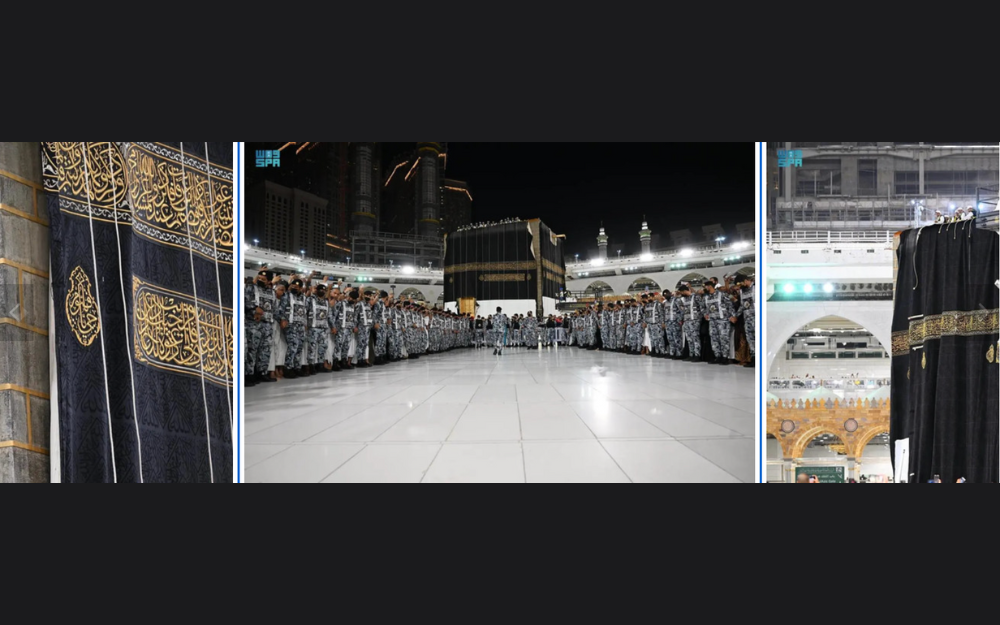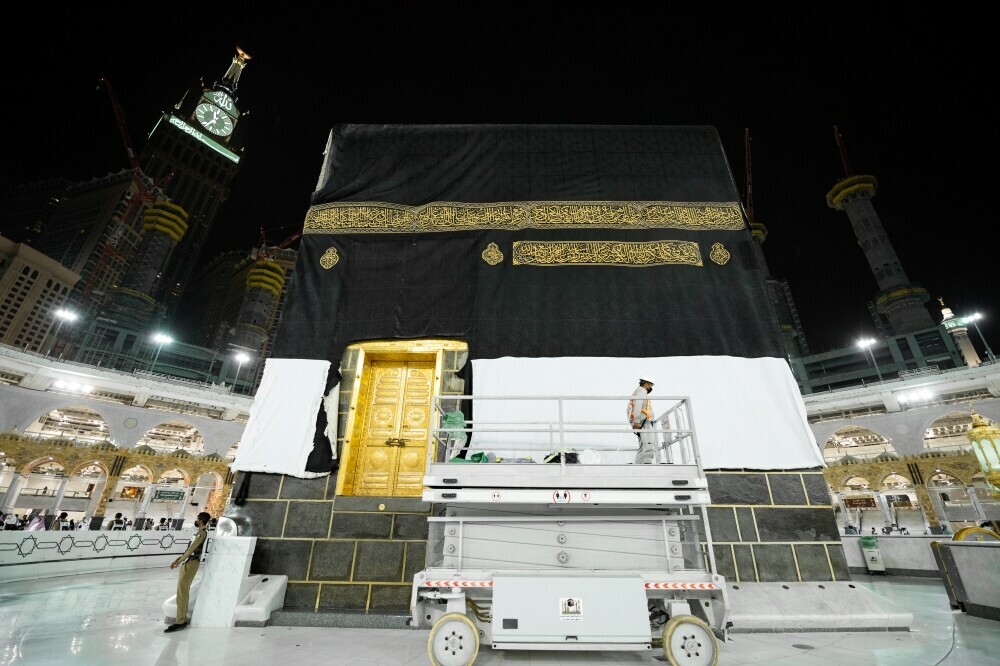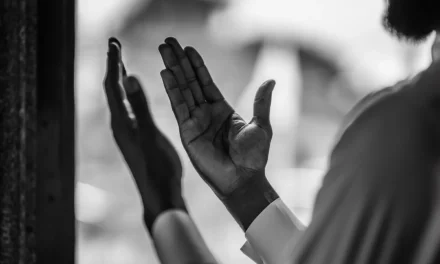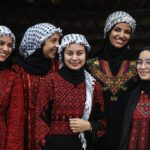In adherence to its annual custom, Saudi officials raised Ka`bah kiswa (specially decorated garment), on Wednesday, May 22, as a precautionary measure to prevent people from damaging it during the pilgrimage season.
Authorized by the General Authority for the Care of the Affairs of the Two Holy Mosques, a white cotton fabric, measuring two-and-a-half meters in width and extending 54 meters in length on all four sides, was delicately placed over the exposed area, as reported by the Saudi Press Agency, Arab News reported.

According to the SPA’s account, the process of raising the kiswa unfolds in stages: commencing with the unscrewing of the bottom cover from all sides, followed by the detachment of the corners, untying of the bottom rope, and its removal from the securing rings.
Subsequently, the cloth is meticulously rolled upwards. Lanterns are then disassembled, the white fabric is positioned, and the lanterns are meticulously reinstated over it, culminating in the final stage.
This ritual is a yearly occurrence, aimed at safeguarding the kiswa from soiling and damage amidst the circumambulation of the Ka’bah by pilgrims.
Beginning of Hajj
In previous year, the kiswa was normally raised on the first day of Dhul Hijjah as an announcement of the advent of the rite and an indication of the beginning of the holy days.
Muslims from around the world pour into Makkah every year to perform hajj, one of the five pillars of Islam.
Hajj consists of several rituals, which are meant to symbolize the essential concepts of the Islamic faith, and to commemorate the trials of Prophet Abraham and his family, may Allah’s peace and blessings be upon them.
Every able-bodied adult Muslim who can financially afford the trip must perform hajj at least once in a lifetime.
Hajj is officially expected to fall this year between Friday, June 14, and Wednesday, June 19, 2024.














